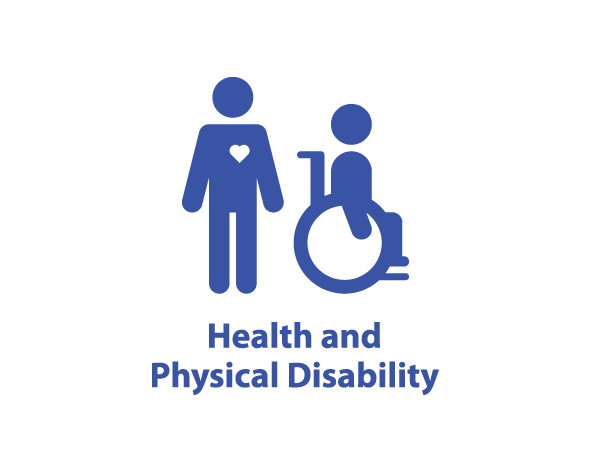
Health and Physical Disability
Disabled people are particularly vulnerable to deficiencies in health and social care services. Depending on group and setting, disabled people may be more likely to experience secondary conditions, co-morbid conditions, age-related conditions and premature death.
There is a clear gap in the information held on physical disability. To ensure people are accessing the services and support they require, more work is needed to bring about improvements.
Evidence suggests that there is a need to focus on employment opportunities for disabled people through personalised, specialist and flexible support.
To support independent living, future planned housing and accommodation should be built to Lifetime Homes Standards building regulations. Housing should support healthy ageing and promote independence through homes that are well designed, good value, appropriately located and energy efficient. Early support through aids and adaptations, handyperson schemes and telecare are fundamental.
Health services are largely organised around hospitals, yet healthcare can and should be provided in the community through primary and community care services.
The COVID-19 pandemic has been a tremendously worrying time for those affected by physical disability and chronic health conditions. Disruption to services and limited access to support networks has exacerbated mental and physical health and well-being to an unprecedented degree. Significant challenges face our region as a result, including increased waiting times, delays in adaptations and limited availability of key support services previously offered within the community.
So that we can meet the potential demands of an increasing older population, the statutory services and the voluntary sector need to work more closely and collaboratively, adopting smarter and more innovative ways of working.
Further expansion and use of digital services such as assistive technology will need to be explored in future iterations of the PNA.
Key gaps identified include:
- Data – Data needs to be captured consistently and standardised across all partners so that intelligence is shared regularly to inform planning, decision making and direction of travel.
- Engagement – regular insights into regional information and groups are required to help co-produce services that sufficiently meet the demand and needs of the population.
- Communications – between partner organisations and people needs strengthening. Information needs to be shared in the correct formats for the intended audiences in a timely manner. This will help in terms of assisting people in receiving the services they need at the point they need them.
It is important to acknowledge the multiple interdependencies between different population cohorts and the various elements of health and social care. The learning from this assessment will need to be applied to planning and delivery of services across the region.

